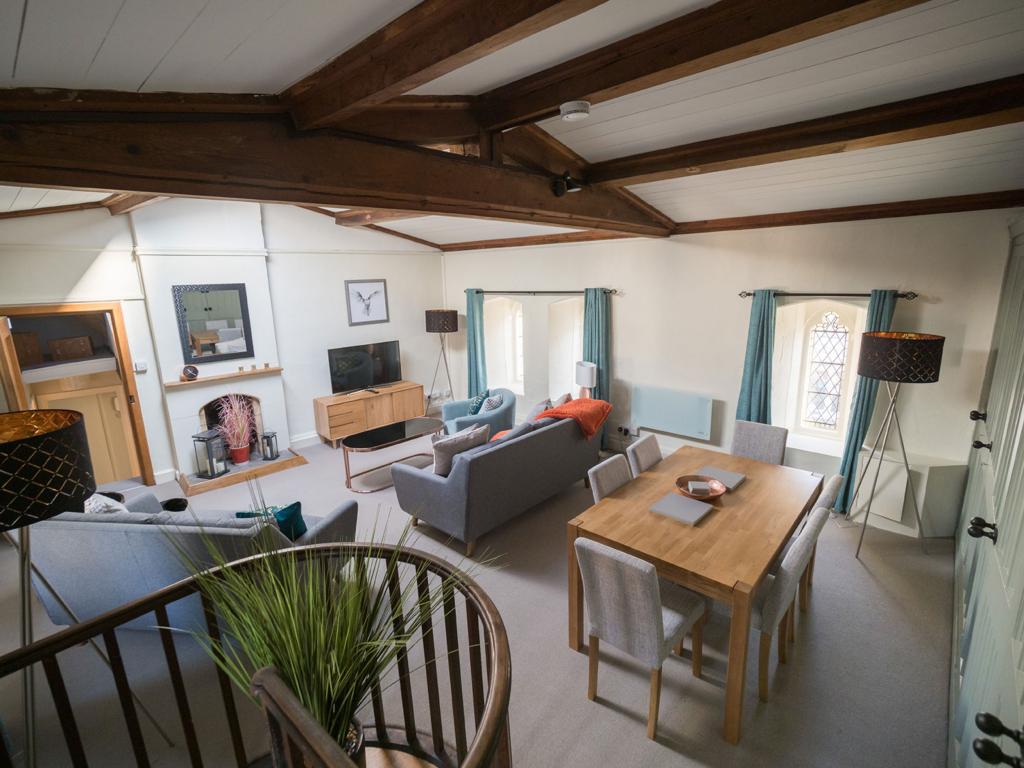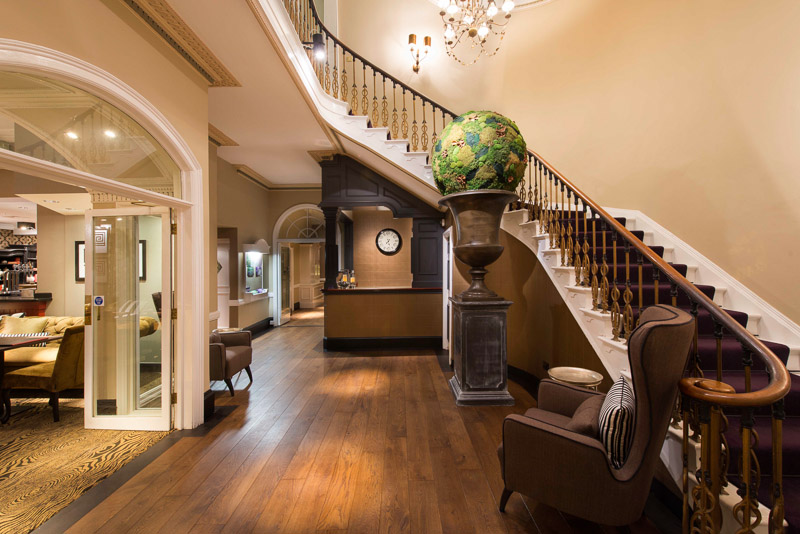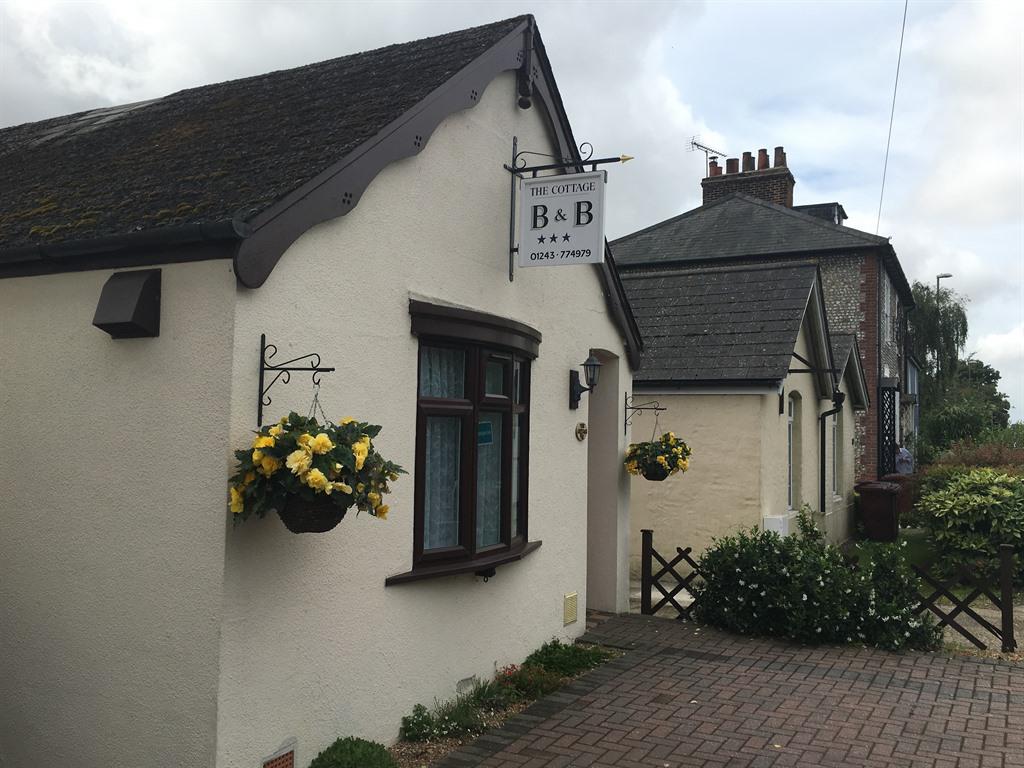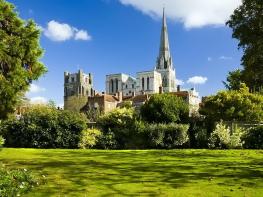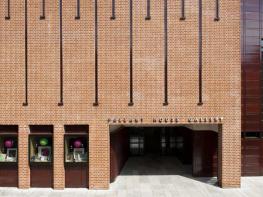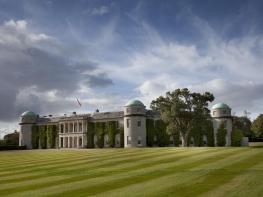Tucked away on a quiet private lane within the cathedral grounds, 4 Canon Lane is a tranquil…
Chichester's spire and canal

A fascinating walk combining the ancient treasures of a cathedral city with the delights of the adjacent countryside.
4 miles (6.4kms)
About the walk
A stroll through the quaint streets of Chichester is the only way to appreciate all that this small but very beautiful cathedral city has to offer. Chichester’s origins date back as far as the late Iron Age, and it was settled by the Romans in about ad 200. They built the walls, which can still be clearly identified.
During the Middle Ages, the city witnessed the building of the great cathedral and its precincts. Later, in the boom years of the 18th century, Chichester really came into its own when wealthy merchants, engaged in the shipping industry and the corn trade, began to build many of the fine houses and civic buildings you see today.
From the car park it is only a matter of minutes before you find yourself right at the heart of Chichester. Make the cathedral your first port of call. This is the focal point of the city, the Mother Church of the Diocese of Chichester. The spire, a notable local landmark, collapsed in 1861 and was rebuilt under the supervision of Sir George Gilbert Scott, who was also responsible for St Pancras station and the Albert Memorial in London. Ranging from Norman to Perpendicular in style, this magnificent building includes the site of a shrine to St Richard, Bishop of Chichester in the 13th century, tapestries by John Piper and Romanesque stone carvings. Another memorable feature is Graham Sutherland’s painting, which depicts Christ appearing to St Mary Magdalen on the first Easter morning.
From the cathedral the walk heads down West Street to the intricately decorated Market Cross, built at the beginning of the 16th century and considered to be one of the finest of its kind in the country. It was Bishop Story who made a gift of the cross to the city. He also endowed the Prebendal School in West Street. Situated at the hub of the Roman street plan and distinguished by its flying buttresses, the cross was built to provide shelter for traders who came to Chichester to sell their wares. Make your way up North Street to the Council House, built in 1731 and famous for its huge stone lion and Roman stone. The Latin inscription records the dedication of a Roman temple to Neptune and Minerva. From here it’s an easy stroll south to the Pallants, a compact network of narrow streets and elegant houses. Leaving the city, the walk then follows the Chichester section of the Portsmouth and Arundel Canal south to the village of Hunston. Buildings change and cities continue to evolve, but Chichester’s most famous landmark, the elegant spire of its cathedral, remains in view for part of this pleasant walk out and back along the canal.
Walk directions
Leave the car park at the northeast corner (the other end from the entrance), to go under an arch between shops. Turn left into South Street by the Fountain pub. Bear left through an archway leading into Canon Lane. Turn right into St Richard’s Walk and approach Chichester Cathedral.
Swing left at the cloisters, then left again to keep the stone wall on your left. Make for the West Door and pass the Bell Tower to reach West Street. Bear right here. Across the road is a converted church, now a pub. The north face of Chichester Cathedral is clearly seen as you head along West Street. On reaching the Market Cross, turn left into North Street and bear right immediately beyond the historic many-arched, red-brick Council House into Lion Street.
Walk along to St Martin’s Square and opposite you at this point is St Mary’s Hospital. Turn right and pass the Hole in the Wall pub to reach East Street. Glance to the left and you can pick out the Corn Exchange. Go straight over into North Pallant and walk along to Pallant House Gallery, with its fine collection of modern art. Head straight on into South Pallant and follow the road round to the right as it becomes Old Market Avenue, passing Christ Church on the left. Turn left at the next junction and keep ahead at the following junction into Southgate.
Cross the railway at Chichester station and then swing left to reach the canal basin. Follow the tow path around the right side of the basin to Poyntz Bridge, dated 1820, and continue to the next bridge, which carries the A27 Chichester bypass. Keep going as far as the next footbridge, Hunston Bridge (confusingly labelled Poyntz Bridge on Ordnance Survey maps, since this is where the latter was originally situated before being relocated).
Admire the view from the bridge of the canal with the cathedral in the distance, the scene depicted in a painting by J M W Turner. Retrace your steps towards Chichester. Just after crossing the railway line, turn left then right to return to the car park.
Additional information
Urban walkways, tow path and field paths, several stiles
Mixture of city streets and open countryside
On lead in Chichester and farmland. Off lead by canal
OS Explorer OL8 Chichester
Southgate pay-and-display car park off Avenue de Chartres
At larger car park over the other side of the Avenue de Chartres and elsewhere in Chichester, including the cathedral
WALKING IN SAFETY
Read our tips to look after yourself and the environment when following this walk.
Find out more
Also in the area
About the area
Discover West Sussex
Divided from East Sussex back in 1888, West Sussex is so typically English that to walk through its landscape will feel like a walk through the whole country. Within its boundaries lies a wide variety of landscape and coastal scenery, but it is the spacious and open South Downs with which the county is most closely associated.
In terms of walking, you’ll be spoilt for choice. Studying the map reveals a multitude of routes – many of them to be found within the boundaries of the South Downs National Park – and an assortment of scenic long-distance trails leading towards distant horizons; all of them offer a perfect way to get to the heart of ‘Sussex by the sea,’ as it has long been known. If you enjoy cycling with the salty tang of the sea for company, try the ride between Chichester and West Wittering. You can vary the return journey by taking the Itchenor ferry to Bosham.
West Sussex is renowned for its many pretty towns, of course. Notably, there is Arundel, littered with period buildings and dominated by the castle, the family home of the Duke of Norfolk, that dates back nearly 1,000 years.
Nearby stays
Restaurants and Pubs
Nearby experiences
Recommended things to do
Why choose Rated Trips?
Your trusted guide to rated places across the UK
The best coverage
Discover more than 15,000 professionally rated places to stay, eat and visit from across the UK and Ireland.
Quality assured
Choose a place to stay safe in the knowledge that it has been expertly assessed by trained assessors.
Plan your next trip
Search by location or the type of place you're visiting to find your next ideal holiday experience.
Travel inspiration
Read our articles, city guides and recommended things to do for inspiration. We're here to help you explore the UK.








